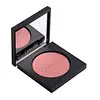What's inside
What's inside
 Key Ingredients
Key Ingredients

 Benefits
Benefits

 Concerns
Concerns

 Ingredients Side-by-side
Ingredients Side-by-side

Mica
Cosmetic ColorantCaprylic/Capric Triglyceride
MaskingSqualane
EmollientZinc Stearate
Cosmetic ColorantLauroyl Lysine
Skin ConditioningC10-18 Triglycerides
EmollientCapryloyl Glycine
CleansingUndecylenoyl Glycine
CleansingButyrospermum Parkii Butter
Skin ConditioningPrunus Amygdalus Dulcis Oil
Skin ConditioningTocopheryl Acetate
AntioxidantDiethylhexyl Syringylidenemalonate
Skin ProtectingSodium Hyaluronate
HumectantIron Oxides
CI 77891
Cosmetic ColorantCI 77742
Cosmetic ColorantCI 15850
Cosmetic ColorantCI 19140
Cosmetic ColorantMica, Caprylic/Capric Triglyceride, Squalane, Zinc Stearate, Lauroyl Lysine, C10-18 Triglycerides, Capryloyl Glycine, Undecylenoyl Glycine, Butyrospermum Parkii Butter, Prunus Amygdalus Dulcis Oil, Tocopheryl Acetate, Diethylhexyl Syringylidenemalonate, Sodium Hyaluronate, Iron Oxides, CI 77891, CI 77742, CI 15850, CI 19140
Mica
Cosmetic ColorantSynthetic Fluorphlogopite
Magnesium Stearate
Cosmetic ColorantBoron Nitride
AbsorbentDimethicone
EmollientSilica
AbrasiveEthylhexyl Palmitate
EmollientCopernicia Cerifera Wax
Octyldodecyl Stearoyl Stearate
EmollientAluminum Hydroxide
EmollientPhenoxyethanol
PreservativeTocopheryl Acetate
AntioxidantCaprylyl Glycol
EmollientTriethoxycaprylylsilane
Simmondsia Chinensis Seed Oil
EmollientBambusa Arundinacea Juice
AbrasiveButyrospermum Parkii Butter
Skin ConditioningCI 77891
Cosmetic ColorantIron Oxides
CI 16035
Cosmetic ColorantCI 77742
Cosmetic ColorantMica, Synthetic Fluorphlogopite, Magnesium Stearate, Boron Nitride, Dimethicone, Silica, Ethylhexyl Palmitate, Copernicia Cerifera Wax, Octyldodecyl Stearoyl Stearate, Aluminum Hydroxide, Phenoxyethanol, Tocopheryl Acetate, Caprylyl Glycol, Triethoxycaprylylsilane, Simmondsia Chinensis Seed Oil, Bambusa Arundinacea Juice, Butyrospermum Parkii Butter, CI 77891, Iron Oxides, CI 16035, CI 77742
Ingredients Explained
These ingredients are found in both products.
Ingredients higher up in an ingredient list are typically present in a larger amount.
This ingredient is also known as shea butter. It is an effective skin hydrator and emollient.
Emollients help soothe and soften your skin. It does this by creating a protective film on your skin. This barrier helps trap moisture and keeps your skin hydrated. Emollients may be effective at treating dry or itchy skin.
Shea butter is rich in antioxidants. Antioxidants help fight free-radicals, or molecules that may harm the body. It is also full of fatty acids including stearic acid and linoleic acid. These acids help replenish the skin and keep skin moisturized.
While Shea Butter has an SPF rating of about 3-4, it is not a sunscreen replacement.
Shea butter may not be fungal acne safe. We recommend speaking with a professional if you have any concerns.
Learn more about Butyrospermum Parkii ButterThis ingredient is used to add a violet color to cosmetics.
It is created by reacting phosphoric acid, ammonium dihydrogen orthophosphate, and manganese dioxide.
Ci 77891 is a white pigment from Titanium dioxide. It is naturally found in minerals such as rutile and ilmenite.
It's main function is to add a white color to cosmetics. It can also be mixed with other colors to create different shades.
Ci 77891 is commonly found in sunscreens due to its ability to block UV rays.
Learn more about CI 77891Mica is a naturally occurring mineral used to add shimmer and color in cosmetics. It can also help improve the texture of a product or give it an opaque, white/silver color.
Serecite is the name for very fine but ragged grains of mica.
This ingredient is often coated with metal oxides like titanium dioxide. Trace amounts of heavy metals may be found in mica, but these metals are not harmful in our personal products.
Mica has been used since prehistoric times throughout the world. Ancient Egyptian, Indian, Greek, Roman, Aztec, and Chinese civilizations have used mica.
Learn more about MicaTocopheryl Acetate is AKA Vitamin E. It is an antioxidant and protects your skin from free radicals. Free radicals damage the skin by breaking down collagen.
One study found using Tocopheryl Acetate with Vitamin C decreased the number of sunburned cells.
Tocopheryl Acetate is commonly found in both skincare and dietary supplements.
Learn more about Tocopheryl AcetateThis ingredient is a combination of red, black, and yellow iron oxide pigments. This combination of colors is usually found in foundation, because it results in a "skin" color.